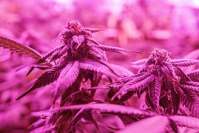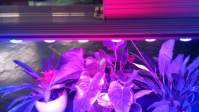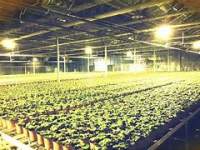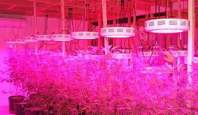Choose the best LED plant lights for industrial hemp
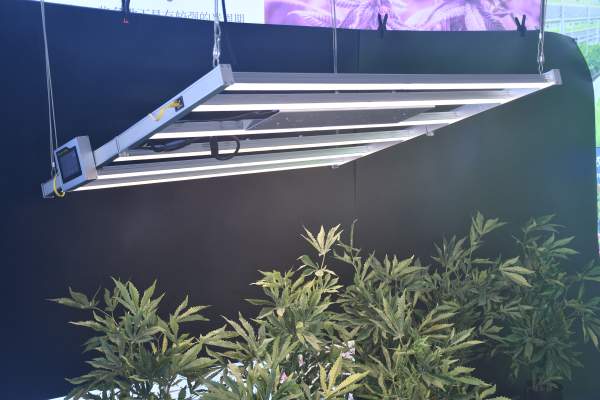
If you want to grow plants, but live in a place with insufficient natural light, you can choose to use LED grow lights. In some areas where there may be a long winter, plants are difficult to grow due to their inability to photosynthesize. The next best option is to use LED plant lights. For industrial hemp growers, one of the most common questions is; "Which type of LED grow lights should I look for?"
I have been constantly trying new LED lights in order to have a real feel for what is on the market. I'm not going to sell it to you on any brand. What I want to say now is what you should pay attention to before investing in real money to buy LED plant lights.
LED plant supplement light is a cutting-edge solution for indoor plant growth, especially for biological greenhouses. When buying LED plant supplement light, you need to consider its durability, which is mainly three parts: lamp beads, fan heat, and power supply. The structure must be high-quality, low-end cheap and low-quality lamps will waste your investment.
In addition to being reasonably priced, you also need to find a device that does not flicker or generate too much heat. In order for plants to flourish, they need enough light, so if your light stays on and off, the plants will not receive as much light as they need. Excessive heat not only damages the equipment, but poor quality buildings can cause overheating.
PAR
Photosynthetically active radiation or PAR is light that is beneficial to plants. It is a substitute for sunlight used by plants, so they can photosynthesize. LED grow lights can have different PAR values depending on the manufacturer. A higher PAR value does not necessarily mean that the bulb is better.
PAR should be evenly distributed between the plants, which is why you need to know the surface area of the garden, because those directly in the light will get more PAR, while those in the distance will not. The best LED grow lights you should consider are those that can evenly distribute PAR.
Ensure it has a suitable cooling system
LED grow lights can overheat, especially if you use them for at least 15 hours a day to provide enough light for the plants. As previously described, overheating can be harmful to your plants and equipment itself. Therefore, your LED plant light should have an efficient cooling system.
The heat in the LED bulb occurs on the back, so there should be a heat sink in this area. It can dissipate heat, so it will not overheat equipment or plants.
Dimmable lamp
Since many different brands make a variety of variants, it is difficult to choose LED lights. Each product will have various functions that may be beneficial or detrimental to different users.
The best you may find is the one that provides dimmable light. The dimmable LED plant fill light is very effective because you can adjust it according to your needs. You can set a schedule of when to turn on and off the lights, so you don't have to do it manually. Some even allow you to adjust the intensity and spectrum of the light to suit the plants you are growing.
Don't be greedy for cheap
LED plant fill light is not cheap. Conventional LED bulbs for home lighting are not as cheap as incandescent or fluorescent lamps, so you can expect them to cost a lot for LED grow lights that can provide life to plants.
Although you may find cheaper variants of LED plant fill lights, consider whether it is really worth it. Sometimes, cheap does not always save money because of poor quality, which may even cost you more on repairs or replacements. Therefore, always choose the most valuable product.
LED chip
You always want to look for a chip with at least 3W. Any chip smaller than 3W can't provide enough consistent light coverage for your plants. This means that each chip needs to be 3W instead of 3 lights of 1W LED, so please pay attention to this when reading the instructions. The 3W chip provides the best quality with white light, blue light and red light.
power
This is also important; you want to read the product description to get the total output. How many units does the lamp claim? It can be 300W, 400, 600 or even 1000. Always check the output and look for at least 300W.
Understand that when it comes to LEDs, you can't always get 100% power, so the final wattage is usually less than the recommended, and regardless of the quality, the chip will always burn out, so the wattage The higher you can also compensate for the loss of wattage.
spectrum
Remember, red, blue and infrared are also important when growing industrial hemp, so you have to stick to the ideal PAR value. Look for blues in the range of 440-470nm, the tearing range of which is between 640 and 660nm.
Heat dissipation
These lights stay on most of the day, usually 15 hours at a time, so you want to make sure they have an internal fan to protect the lights and a fan to protect the plants. If it is too hot there, it may damage the plants.
LED lamps operate at a lower temperature than HPS bulbs because they only emit about 15% to 25% of their energy as heat, but the heat occurs behind the LEDS bulb, so this area needs to be protected. High-quality lights will have a thick aluminum heat sink on the outer or inner area of the rear to remove heat from the chip.
lens
High-quality lamps will have an optical lens that can magnify the light and increase the nutrient permeability of plants by about 25%. This makes the lamp more expensive, but it is definitely worth it.
Materials
The LED should have a warranty, preferably one of 5 to 10 years. But the reality is that the service life of LEDs of this nature is about 10 years, especially in some more expensive panels. Look for panels made of aluminum, steel, or materials that are not easily broken.
Warranty
As mentioned earlier, looking for lamps with a warranty of more than one year, LEDs have a lifespan of up to 10 years, so I am a little skeptical about manufacturers who only provide a one-year warranty, because this indicates that the manufacturing cost of the housing or cable system is low. I usually expect a 3-year warranty on the parts.
It must be guaranteed that the parts will be better, because no matter which part needs to be replaced, the bulb will continue to work. You can easily replace the missing part yourself when it arrives, while your plants can still get the nutrients they need.


